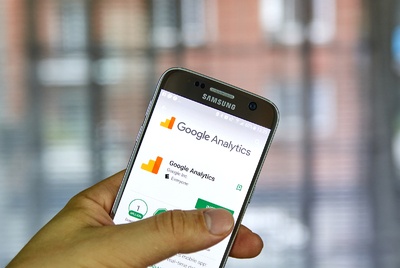 Everyone is concerned about how their data is being used, and rightfully so. Because companies can gain access to a lot of information about their consumers, or even potential consumers, it's important for them to be diligent about the ways they're utilizing this data. This is especially true because strategies like data-driven marketing can be so powerful in guiding marketing messaging and targeting.
Everyone is concerned about how their data is being used, and rightfully so. Because companies can gain access to a lot of information about their consumers, or even potential consumers, it's important for them to be diligent about the ways they're utilizing this data. This is especially true because strategies like data-driven marketing can be so powerful in guiding marketing messaging and targeting.
On one hand, it can seem difficult to understand how data, statistics, and numbers go hand-in-hand with creative marketing content, but taking the time to look at your marketing data and understand what it means is absolutely key to a successful marketing strategy. Data-driven marketing helps your business and your marketing team to know what's working and what isn't, and how to adapt to fix things or increase ROI.
Let's take a look at the various types of data to which you should be paying attention with a data-driven marketing strategy.
1. Demographic Data
Demographic data is basic data about a person and helps you to fully understand who your audience is so that you know who you need to be targeting within your marketing messaging. There are tons of different marketing software you can utilize for this, but you can look at the basics within Google Analytics.
Be sure that you have created a Google Analytics account for your website and that the tracking pixel is properly implemented or else you won't be able to gather any data from your website.
Then you can navigate to analytics.google.com to check out your insights. You'll find demographic information under Audience > Demographics. Check out the overview before diving deeper into the other tabs.
Under the audience section, you can view average age, gender, language, location, and more.
This helps you to understand the people who are visiting your website. These are your people, the ones who are interested in your product or service, and the ones on whom you want to be focusing your advertising.
2. Consumer Interests
You also want to discover what your audience's interests are so that you can appeal to them through your marketing messaging. Google Analytics has some basic interests information under Audience > Interests, like the industry the visitor is from (especially important for B2B companies) and things they like or like to do (shopping, home/garden, etc.).
You can also use Google Trends to find out more information like this. You can search for search terms and keywords that you know your audience is searching for and find more keywords that pertain to your initial query. This is great for keyword research and understanding your audience interests a little further.
 3. Behavioral Data
3. Behavioral Data
You'll want to take a look at your Google Analytics, email marketing insights, and social media analytics to gather all of this information. Essentially, you want to pay attention to your audience's current behaviors. What is your email open rate? Your email click rate?
If people aren't opening your emails, what could be the cause? Are your topics not resonating with your audience? Do your subject lines need to be more enticing? Do you have an old or stale email list?
Look at your social media analytics. Your follower count isn't a statistic that really matters. In fact, it's more of a vanity metric that just makes someone feel good, especially because just a fraction of your followers actually see your content.
Instead, you want to pay attention to things like reach and engagement. Look at the types of posts that reach more of your audience. Is it links to your website? Photos? Videos? Those are the types of posts that you want to share more often. With what types of content is your audience more likely to interact? Pay attention to posts on which you get more than just likes. If people are actually reacting, like using the love, laugh, or other emojis on Facebook, those are posts that your audience cares about.
Then you want to dive into your website analytics via Google Analytics again.
This time, you're going to take a look at what your most popular posts and pages are. These resonate with your audience or are audience favorites. Take a look at your most popular product or service pages to see what people are most interested in. Pay attention to how long people are staying on your website, as well as what your website's bounce rate is. Are people coming to your site and immediately leaving? If so, what could you do to get them to stay?
4. Sales Data
This is some of the most important data that your business needs to monitor. What is your conversion rate? On average, out of every lead that is generated by every avenue, how many of those does your business close?
If you're not happy with that number, start thinking about some tactics you can utilize to close more sales. Does your lead nurturing need some work? Do you need to update your sales pages? Does your website need a redesign? Do you need to work on your sales pitch?
Revisit every tactic you currently use to close a sale to see if any of them can be tweaked to become more effective. Your sales data is what is actually, actively making your business money and making your business profitable, so it's essential to understand your conversion rate.
Furthermore, you want to look at your ROI for your sales and marketing efforts as well. Look at how much you're spending on advertising or marketing, and how much revenue those efforts are generating. If you're spending more than you're making, you need to reevaluate your strategy.
Data-driven marketing can be a very powerful inbound marketing strategy. It helps you to understand things about your business and your marketing efforts that you won't be able to find out in any other method. If you're interested in learning more about the types of data your business should be paying attention to, contact us today!
No comments:
Post a Comment